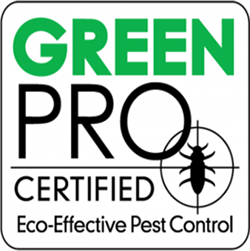Is it Venomous? Spence’s Guide to Household Spiders
ExpiredWith the weather steadily getting colder each day, you’re likely to come across more pests throughout your home, including spiders. While we typically associate spiders with the arrival of fall and the Halloween holiday, they can remain present in your home all throughout the winter. Maybe it’s their potentially venomous bite, but the fear of spiders is one of the most common fears that people have. That’s why it’s important to understand which spiders pose a danger to you and which ones are harmless so you can keep your family safe from dangerous spiders all winter long.
 Before we begin our discussion on the spiders you may come across in your home, it’s important to remember that any kind of spider, venomous or not, can be indicative of a larger pest problem within your home. Spiders are predators and hunt insects as their primary food source. If there’s a steady supply of insects throughout your home, you’re more likely to see an increased number of spiders as well.
Before we begin our discussion on the spiders you may come across in your home, it’s important to remember that any kind of spider, venomous or not, can be indicative of a larger pest problem within your home. Spiders are predators and hunt insects as their primary food source. If there’s a steady supply of insects throughout your home, you’re more likely to see an increased number of spiders as well.
Granddaddy Longlegs
You’ve probably heard the wives’ tale that these gangly arachnids are some of the most venomous spiders in the world and that the only reason they can’t hurt us is that their mouths are too small to penetrate human skin. We’re here to tell you that’s not entirely false. When people refer to “granddaddy longlegs,” they usually are referring to either opilionids arachnids or pholcids. Opilionids arachnids are insects with pill-shape bodies and eight long legs that are actually not spiders. These Opilionids arachnids are usually found consuming decomposing vegetation and animal matter. They do not have fangs and are not venomous.
Pholcids, which have eight long legs and small bodies, actually are spiders. They are venomous predators that have similar fang structures to brown recluse spiders but have never been known to bite humans. For that reason, scientists have yet to research the potency of their venom. Wives’ tale or not, these critters pose little to no threat to humans but can still be indicative of a larger pest problem.
Black Widow
The black widow is arguably the most widely-known spider in America. It is known for its signature jet black/dark brown body with a bright red hourglass shape on the abdomen. The Black widow spider obtained its infamy due to the potency of its venom. This spider’s bite can inflict severe pain for days in adults and can result in even more serious medical repercussions for children or the elderly. Death from a black widow bite is unlikely but anyone who is bitten should still seek medical attention immediately. Because of the threat these spiders pose to humans, black widows should be exterminated immediately if found in your home or business.
Black widow spiders typically build their webs low to the ground in cluttered, protected areas. These areas often include wood piles, leaf litter, garages, and basements. This spider is found in all 50 states, and is, therefore, one of the most widely feared pests in the entire country.
Wolf Spider
Wolf spiders are known to terrify homeowners throughout the fall season, but that doesn’t mean they’ll be completely gone come wintertime. These classic fall intruders are known for their hauntingly large size and their ferocious name. While they may seem intimidating, wolf spiders are actually rather shy and have a less potent bite than other spiders. In fact, they rarely bite humans unless they are provoked. Even then, their bite is comparable to a wasp sting.
These spiders are known to wander indoors as the weather cools in search of warmth and a mate. One of the most fascinating things about wolf spiders is that they do not weave webs and instead hunt their prey on foot. They also are the only known spider species to carry all of their young on their abdomen. If you disturb a mother wolf spider or attempt to squash her yourself, you may suddenly find hundreds of smaller spiders running around your home. That’s why it’s best to contact a pest control service if you ever see any of these furry spiders lurking in your home or business.
Yellow Sac Spiders
Yellow sac spiders are becoming more and more common in Virginia and the surrounding region. There are two species of spiders commonly referred to as yellow sac spiders, Cheiracanthium inclusum and Cheiracanthium mildei. Both species of these spiders are known for being yellow in color with brownish tips on their legs and a brownish line going down the abdomen.
Yellow sac spiders are typically found in manmade structures and like to reside in the corners of ceilings and walls. Both species of yellow sac spider are typically found in or near their silk tube or “sac” that they use for protection during the day. They are nocturnal creatures who hunt at night, leaving the safety of their stinky homes to prey on insects. These spiders are known for having very toxic venom, but recent research has discovered that a bite from one of these spiders is not as harmful as previously believed. Therefore, while these spiders can bite and hurt you, they are not the most harmful spider present in our area.
Brown Recluse
Brown recluse spiders are among of the most dangerous in our region. While their natural habitat technically does not include the state of Virginia, isolated populations have been found throughout the region. These spiders are light brown or tan in color with very uniform coloring aside from the dark fiddle shape on the back of their heads. They almost never have banding on their legs or any other discoloration on their bodies. These spiders are known to live in the garages and basements of houses and businesses.
While bites from a brown recluse spider are rather uncommon, they can be very dangerous depending on the victim’s reaction. Some people experience little to no reaction, while others can experience severe symptoms like fever, nausea and tissue death at the site of the bite, leaving wounds that take weeks or months to heal. If you spot a brown recluse spider, contact pest controls services immediately.
It’s important to remember that while this guide will help you avoid the most dangerous spiders, it certainly does not cover the full range of arachnids that can be present in your home. No matter what spiders you come across inside your home, actions can be taken to help rid your living space of them. If you’re concerned about the presence of spiders in your home or business, contact Spence’s Pest Control at (804) 794-7738 to schedule an inspection today. We’re the ones to call for the best pest control Richmond has to offer!












